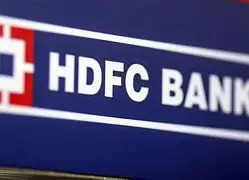
In India’s bustling financial markets, a handful of companies wield outsized influence. Among them, HDFC Bank remains one of the most closely tracked stocks on Dalal Street. Every rise or fall in its share price ripples through benchmark indices like the Nifty 50 and the Sensex, shaping investor sentiment across sectors.
With “HDFC Bank share price” now trending on Google, it is clear that retail and institutional investors alike are keeping a close eye on the bank’s stock movements in 2025. The question remains: what is driving these shifts, and what do they mean for the broader stock market?
The Weight of a Giant
Following its merger with HDFC Ltd in July 2023, HDFC Bank became not only the largest private sector bank in India but also one of the world’s most valuable lenders by market capitalization. Its sheer size gives it a commanding presence in benchmark indices.
At nearly 14% weightage in the Nifty 50, HDFC Bank is a bellwether stock. Analysts often remark: “When HDFC Bank sneezes, the market catches a cold.” That is no exaggeration—its price movement can swing indices by hundreds of points, directly affecting the wealth of millions of investors.
Current Share Price Trends
In 2025, HDFC Bank’s stock has witnessed a mix of volatility and resilience. Global economic uncertainties, fluctuating interest rates, and foreign fund flows have all added pressure. Yet, the bank’s fundamentals—ranging from strong credit growth to healthy asset quality—have ensured that investors keep faith.
Key drivers shaping the share price include:
- Loan Book Expansion – HDFC Bank continues to record double-digit growth in advances, supported by housing, retail, and SME lending.
- Post-Merger Gains – Cross-selling of mortgages, insurance, and investment products is beginning to show results.
- Net Interest Margins (NIMs) – Interest rate movements by the RBI directly affect the bank’s profitability, and hence, its stock performance.
The Retail Investor Angle
For lakhs of Indian households, HDFC Bank stock is seen as a safe, long-term bet. It is a cornerstone of many equity mutual funds and SIP portfolios, meaning even small investors are indirectly exposed to its performance.
Market chatter reveals a common pattern: retail investors often use price dips as entry points. For them, HDFC Bank is not about quick gains but about steady compounding over the years. A 5–7% correction in the stock price is usually met with renewed buying interest, reflecting the trust it enjoys.
Institutional Sentiment and FII Flows
Foreign Institutional Investors (FIIs) and domestic institutions also keep large positions in HDFC Bank. For global funds seeking exposure to India’s banking story, it is often the first choice, thanks to governance standards and scale.
However, FII activity can introduce volatility. When global investors trim emerging market exposure due to geopolitical or currency risks, HDFC Bank often sees heavy selling, pulling down indices in tandem. Conversely, inflows into India usually find their way back into HDFC Bank, stabilising the stock.
Why It Shapes Stock Market Trends
The importance of HDFC Bank’s share price extends beyond its shareholders. Its movements are often seen as a proxy for the Indian economy:
- Credit Growth reflects consumption and investment demand.
- Asset Quality mirrors the health of corporate and retail borrowers.
- Valuation Premiums signal global investor confidence in India’s financial sector.
As such, analysts and traders often watch the bank’s quarterly results as a barometer of broader market health. Positive results tend to lift the entire banking pack, while any disappointment weighs down indices.
Risks to Watch
Despite its dominance, HDFC Bank faces headwinds that could weigh on its stock:
- Margin Pressures: Higher deposit costs can shrink profitability if not balanced by lending rates.
- Competition: Rivals like ICICI Bank and Axis Bank are aggressively gaining ground in retail and corporate segments.
- Regulatory Scrutiny: RBI has in the past flagged digital outages and compliance issues, which spook markets temporarily.
- Global Uncertainty: External shocks—oil price spikes, currency volatility, or global slowdowns—can affect FII flows and stock stability.
Technical Snapshot
Market experts note that HDFC Bank tends to respect certain support and resistance zones. For traders, these levels provide short-term cues. But for long-term investors, what matters are earnings per share (EPS), return on equity (ROE), and non-performing assets (NPAs).
Historically, the stock has rewarded patient investors who ride out corrections. The fundamental strength of the franchise makes it a compounding machine rather than a speculative play.
Beyond Share Price: Digital & Rural Push
HDFC Bank’s share price story is also about how it adapts to India’s changing financial landscape:
- Digital Banking: Heavy investments in UPI, mobile banking, and AI-driven services will keep it relevant among younger users.
- Rural Expansion: Branches in semi-urban and rural belts are expected to drive future deposit and loan growth.
- Sustainability Initiatives: Investors are increasingly factoring ESG (Environmental, Social, Governance) metrics into valuations, and HDFC Bank’s efforts in this area are under watch.
Investor Outlook for 2025
Most brokerages maintain a “buy” or “accumulate” rating on HDFC Bank, citing its scale, profitability, and growth prospects. While short-term volatility is unavoidable, the long-term story remains intact.
Analysts expect merger synergies to fully reflect over the next two years, further boosting earnings. With India’s economy projected to grow at over 6% annually, credit demand is unlikely to slow down. For investors, this makes HDFC Bank a pillar of stability in uncertain times.
Conclusion
The story of HDFC Bank’s share price is, in many ways, the story of India’s financial markets. As the largest private lender, it influences indices, shapes investor sentiment, and mirrors the broader economy’s health.
For traders, it offers short-term volatility; for investors, it offers long-term compounding. And for the market as a whole, it remains a bellwether stock—one whose every move is watched with keen interest.
In 2025, as Google Trends lights up with searches for “HDFC Bank share price,” the message is clear: India’s largest private lender is not just a stock, it is a market mover.
Also read:Jio 5G Expansion: What It Means for India’s Internet Users
Last Updated on: Tuesday, August 26, 2025 4:29 pm by Ch Saketh | Published by: Ch Saketh on Tuesday, August 26, 2025 4:29 pm | News Categories: News
